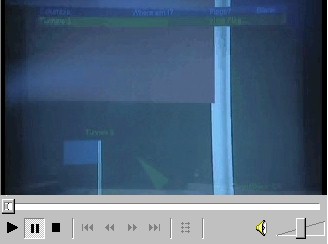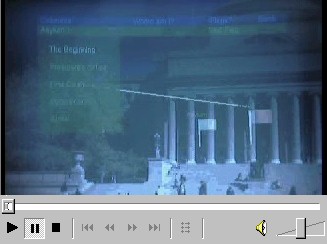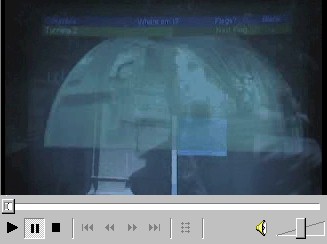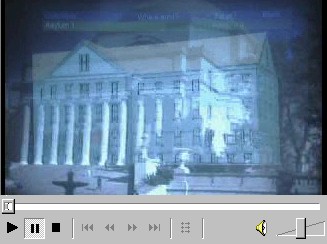Situated Documentaries |

|
|
Tobias Höllerer, Steven Feiner, and John Pavlik |
Columbia University
|
Situated Documentaries |

|
|
Tobias Höllerer, Steven Feiner, and John Pavlik |
Columbia University
|
 |
 |
 |
 | |
| 5.18 MB MPEG-1 movie | 7.25 MB MPEG-1 movie | 6.2 MB MPEG-1 movie | 10.44 MB MPEG-1 movie | |
| User looking around Columbia's campus, visually selecting different flags denoting story elements. | User is selecting one of the stories associated with a "1968 student revolt" flag. Multimedia story includes audio narrative, images, and video material, shown on visor and hand-held displays. | User is selecting a flag with information on the Columbia tunnel system. A texture mapped hemisphere surrounds the user, providing an omnidirectional view of a Columbia tunnel. | User is selecting a flag on the Bloomingdale Asylum complex. By means of a "time slider" applet provided on the handheld computer the user can get a real life impression of the different buildings that once covered the space of today's Low Library. |
© Computer Graphics and User Interfaces Lab, Columbia University
T. Höllerer, S. Feiner, J. Pavlik,
Situated Documentaries: Embedding Multimedia Presentations in the
Real World, In: Proc. ISWC '99 (Third Int. Symp. on Wearable Computers),
San Francisco, CA, October 18-19, 1999, pp. 79-86
(
2MB Acrobat version of paper)(
3.1MB gzipped Postscript version of paper)
Please send comments to Tobias Höllerer at <htobias@cs.columbia.edu>